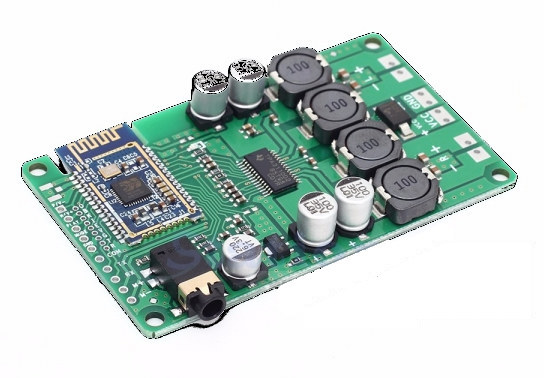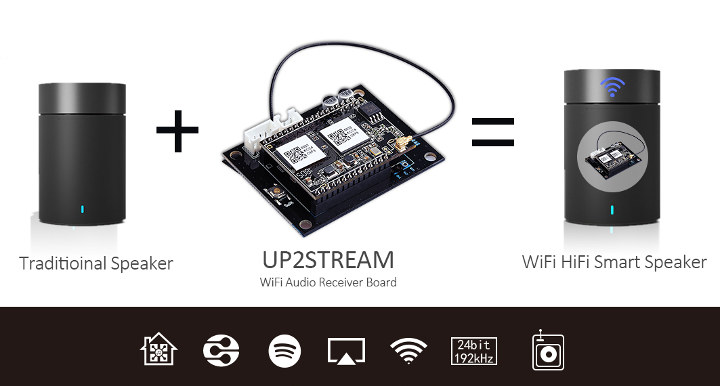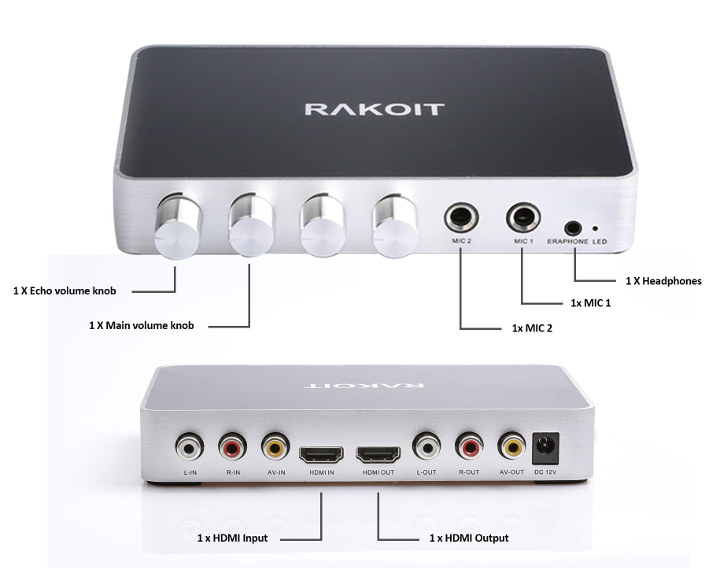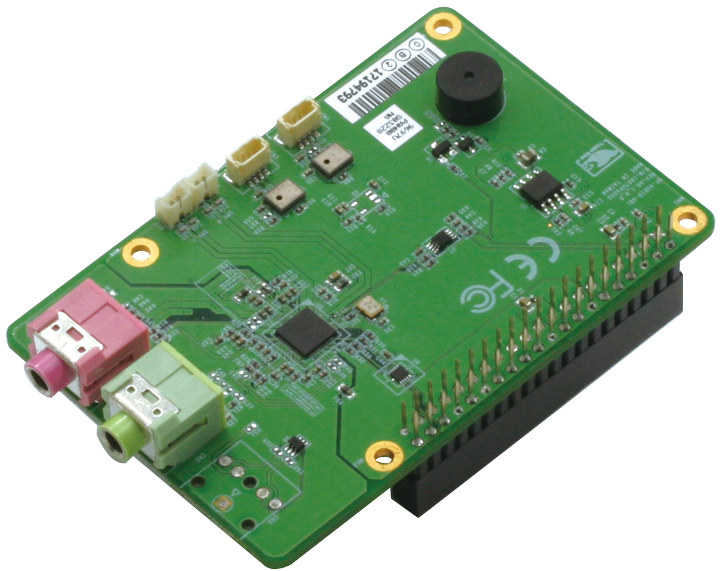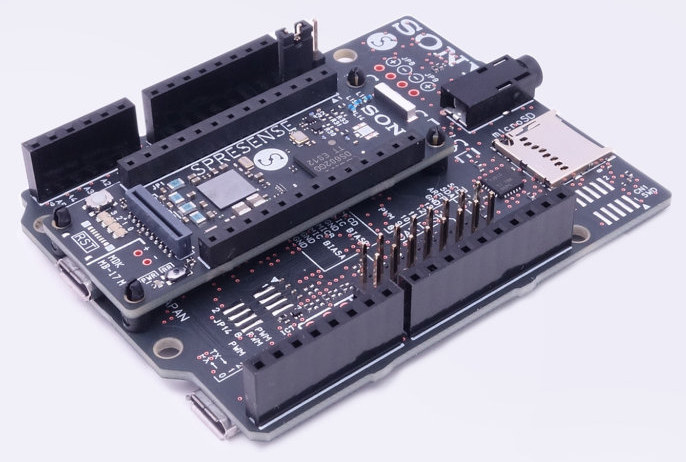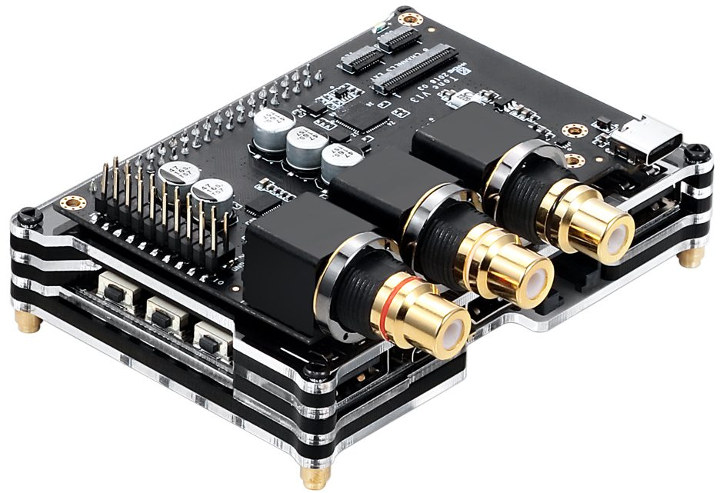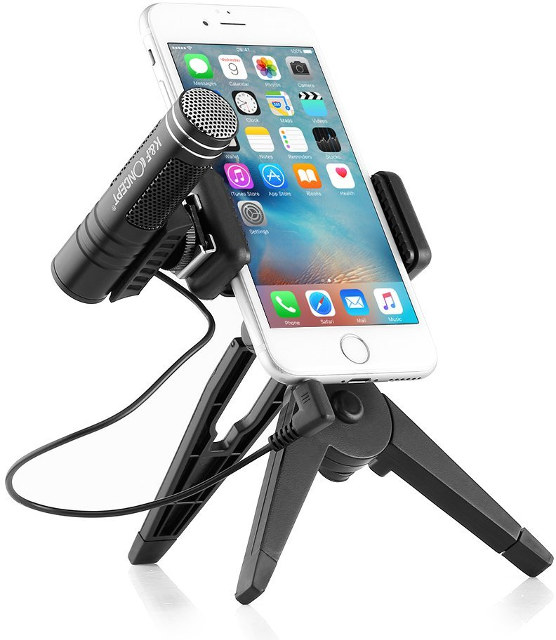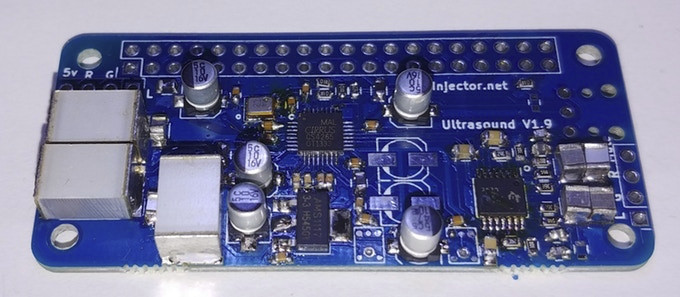I’ve been writing about a few Bluetooth 5.0 solutions this year, but in most case those were based on Nordic Semi nRF52 chips which do support BT 5.0 Low Energy, but not Bluetooth classic which means they are suitable for HID devices, but not for all applications such as potentially some Bluetooth audio application. I’ve just come across a $10.59 audio amplifier board on IC station that is supposed to support Bluetooth 5.0 via Beken BK3266 Bluetooth audio chip. Specifications and features listed for the board: Bluetooth 5.0 Connectivity Up to 6 paired devices Bluetooth protocols – HFPV1.7, A2DPV1.2, AVRCPV1.5, AVCTPV1.2, AVDTPV1.2 Range up to 10 meters Transmission Power – Class2, 4dbm Sensitivity – -81dBm < 0.1% BER Frequency Range – 2.402GHz – 2.480GHz Audio MP3/WMA/WAV music format Speaker Impedance – 4 to 8 Ohm Output Power – 2x15W at 16V/4A, 2x10W at 12V/4A Audio signal to noise ratio >75dB […]
Up2Stream WiFi Audio Receiver Module Targets DIY Wireless Speakers
If you own a set of very good speakers, and are interested in making them smarter, Arylic Up2Stream WiFi audio receiver module may be a solution to look into. The module allows to make your own DIY wireless speakers by adding WiFi connectivity, and features such as multiroom, AirPlay, DLNA streaming, Spotify, and Internet radio streaming. Up2Stream (WA31) hardware specifications: SoC – MediaTek MT7688AN MIPS processor @ up to 580 MHz System Memory – 64MB DDR2 Storage – 16MB flash Connectivity – 2.4GHz 802.11 b/g/n 1T1R WiFi up to 150 Mbps with 5 dBi I-PEX antenna Audio – 24-bit / 192 KHz decoding, 20 Hz – 20KHz frequency range, 4-pin speaker connector with 2.0mm pitch USB – 1x USB 2.0 port port Power Supply – 5VDC / 1A via 2-pin header (2.0mm pitch) Power Consumption – 160 to 320 mA Dimensions – 55.21 x 41.37mm The module ships with a […]
Rakoit KM200 Karaoke Audio Mixer Supports 4K Videos
While there are plenty of karaoke systems on Aliexpress, it’s pretty hard to find one that supports 4K videos, and Rakoit KM200 karaoke audio mixer is one of the rare that do. You’d just need to add your own 4K TV box / media player / computer, 4K UHD television, one or two microphones, and you’re ready to go. Rakoit KM200 specifications: Audio & Video In/Out HDMI output and HDMI input with 4K2K video support RCA jack for composite and stereo audio output and input 2x MIC Line-in Controls – 2x MIC volume adjust button, main volume adjust, echo volume adjust, earphone slot Power Supply – 12V DC Beside audio mixing, the device works as an amplifier, and supports 1080p to 4K upscaling. The karaoke mixer ships with an HDMI cable, an RCA cable, and a power adapter. Rakoit KM200 now sells for $99 on Acrylic.com, but you’ll also find […]
Three Add-on Boards for UP Board and UP Squared – UP-AUDIO HAT, UP-CAMERA HAT, UP-POE HAT
AAEON has announced three add-on boards for their Intel based UP board (Cherry Trail) and UP Squared board (Apollo Lake): UP-AUDIO HAT – Features external ports for a microphone and speakers/headphones UP-CAMERA HAT – Comes with two FPC/FFC connectors for 2M security camera UP-POE HAT – Adds WAN and LAN Gigabit Ethernet ports and PoE support UP-AUDIO HAT AAEON’s UP-Audio HAT currently only works with UP board, and features the following: Audio Codec – Realtek ALC5672 3.5mm Audio Jacks – 1x Line out, 1x MIC Headers – 2x speaker Built-in Components – 2x digital microphones, 1x buzzer Connects to board via 40-pin GPIO female header Dimensions – 85 mm x 56 mm The board is supported in Windows 10, Android 6, and Ubuntu 16.04. UP-CAMERA HAT The camera board works with UP Board, UP Squared and UP Core boards. UP-CAMERA HAT specifications & features: 2x MIPI CSI-2/ DSI DPHY Re-timer […]
Sony SPRESENSE Arduino Compatible GNSS + Audio IoT Board To Sell for $50 (in Japan)
Last year, we covered Sony Spritzer, an Arduino compatible with a Sony hexa-core Arm Cortex-M4F micro-controller, a built-in GNSS receiver, and an audio codec. The product page for this product is now gone, but it appears Sony only renamed it to SPRESENSE, made some design modifications, and is ready to launch the main board for 5,500 JPY (~$50), and the extension board for an extra 3,500 JPY ($32) on July 31, 2018. Sony SPRESENSE main board (CXD5602PWBMAIN1) specifications: MCU – Sony CXD5602 ARM Cortex-M4F ×6 micro-controller clocked at up to 156 MHz with 1.5MB SRAM Storage – 8MB Flash Memory GNSS – GPS & GLONASS Audio – 3.5mm audio jack Expansion I/Os Digital I/O Pins – GPIO, SPI, I2C, UART, PWM, I2S Analog Pins – 2ch (0.7V range) Camera interface USB – 1x micro USB port for programming and power Power Supply – 5V via micro USB port Dimensions – […]
Khadas Tone High Resolution Audio Board is Designed for Khadas VIM/VIM2, PCs, and Other SBCs
Khadas VIM and Khadas VIM2 are development boards powered respectively by Amlogic S905x and S912 processors that come with decent software support. The company also provides application specific add-on boards for their SBCs, and a while ago, I reviewed VIM2 with their dual tuner board and showed how to stream videos from my satellite dish or terrestrial antenna to the local network. Their latest solution is Khadas Tone board for high-quality audio applications. Khadas Tone “VIMs Edition” specifications: Multicore MCU – XMOS XU208-128-QF48 with 8x xCORE-200 cores up to 500 MIPS DAC – ES9038Q2M 32-Bit Stereo Mobile Audio DAC THD+N – ≤ 0.000337% @1KHz SNR – ≥ 120dB @ 10Hz~20KHz DNR – ≥ 120dB @ 10Hz~20KHz Crosstalk – ≥ 127dB @ 10Hz~20KHz Frequency Response – ±0.08 dB @ 10Hz~20KHz Sampling Frequency PCM: Up to 768KHz @ 32bit DSD: Up to DSD256 @ 1bit Clock Jitter Reference Clock Jitter < 3ps […]
This Smartphone Tripod with Microphone is Designed for Audio/Video Recording
More and more use cases are being handled by smartphones, and we’ve recently seen smartphone stands helping with specific applications such as keyboard and mouse mobile gaming, or a flexible lazy holder allowing you to carry the phone around hands-free among other things. I’ve now come across another smartphone stand that’s designed for audio recording with a built-in microphone, and that could be useful to video bloggers, or others requiring high(er) quality audio recording on the go. Specifications & key features: Microphone Material – ABS + Aluminum alloy Monomer: Electrets condenser Directivity – Heart-shaped Test voltage: 1.5V Impedance: 220Ω Sensitivity: -39db±3dB (0dB=1V/Pa at 1kHz) S/N: ≥65dB 3.5mm audio jack connector 360 degree tube rotation design for microphone holder Foldable tripod with adjustable clamp for smartphone The accessory works with any phones that comes with a 3.5mm audio jack, or adapter for phones with a USB type C port only. The […]
Flatmax Studio Audio Injector Ultra Sound Card is Designed for Raspberry Pi Boards (Crowdfunding)
Flatmax Studio has launched several audio cards for Raspberry Pi boards on Kickstarter in recent years, and their latest board is called “Audio Injector Ultra Sound Card”. The board is said to give high fidelity input and output audio @ 192 kHz, is equipped with digital output (S/PDIF) and offers dual microphone capability. An extra balanced HAT – will send and receive balanced stereo input and output – is also available. Specifications: Direct Inputs – Unpopulated Analogue Connectors (stereo RCAs provided) Direct Outputs – Unpopulated Analogue Connectors (stereo RCAs provided), Digital Optical SPDIF (Optical transducer provided) Potentiometer Inputs – Unpopulated Connectors and potentiometer (stereo pot. not provided). Potentiometer Outputs – Unpopulated Connectors and potentiometer (stereo pot. not provided). Microphone – 2x high quality ultrasound (model – SPU0410LR5H) surface mount microphones populated Audio Codec – Cirrus Logic CS4265 stereo codec Sample rate – 192 kHz, 24 bit Jitter control – Low […]


